These photographs are a depiction of the resilience and resourcefulness of a people traumatized by their own country and their own government. The Rohingya are a Muslim minority group who have been residing in the area formerly known as Arakan State (now Rakhine State in western Myanmar) since before the 16th century. Since the introduction of the 1982 Citizenship Act, implemented by the formerly ruling military in the country, they have no longer been recognized as citizens by their own government and have been rendered stateless. They have been stripped of their citizenship and denied their political and human rights. Today, there are roughly 3 million Rohingya scattered across the globe who have no place to call home. According to UN statistics, the Rohingya are one of the most persecuted minorities in the world. Furthermore, recent investigations have pointed to a planned, decades-long genocide committed by the Myanmar military and government against the Rohingya.
Stateless, many Rohingya flee their homeland in order to escape religious, political and cultural persecution, particularly after the violence that erupted in Sittwe in 2012. They risk their lives, illegally crossing borders by foot or on perilous boat journeys, where they are often subject to the whims of human traffickers. Those who manage to make it out alive and free from arrest usually end up in squalid, makeshift refugee camps or in the shadows of impoverished villages, as shown in this collection of photographs. Clean water, medical care and proper education are scarce or utterly nonexistent.
Even with a supposedly democratic party taking office in November of 2015, led by Aung San Suu Kyi, the Myanmar government has done nothing to quell the severe human rights abuses that the Rohingya face on a daily basis. The Rohingya need our help. The genocide must end. The Rohingya must be recognized.
#SaveTheRohingya #WeAreRohingya
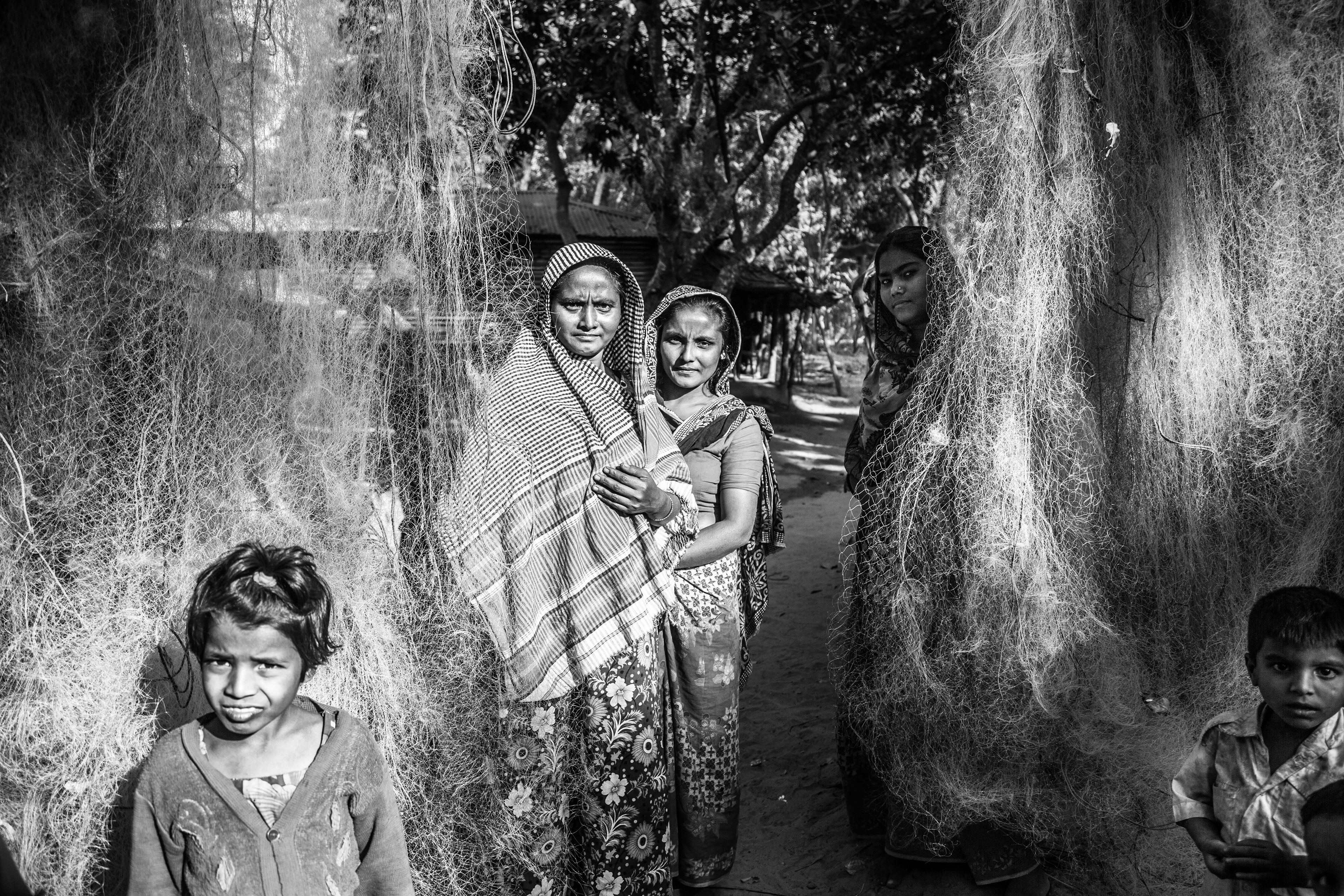
"Fishing Nets." Shamlapur, Bangladesh. Jan 2016. While the men are on boats at sea or working on neighboring farms, the women stay with the children and elders, repairing and drying fishing nets. Rohingyas make up an estimated 5,000-7,000 of the 12,000 residents in this fishing village.

"Resilience and Resourcefulness." Shamlapur, Bangladesh. Jan 2016. A young boy in school clothes comes home from madrasa while another comes back from the beach with some fresh fish. Generous teachers do exist that allow Rohingya children to participate in their schools and lessons, privately or at the local mosque, but some families cannot afford to have their children do anything but work.
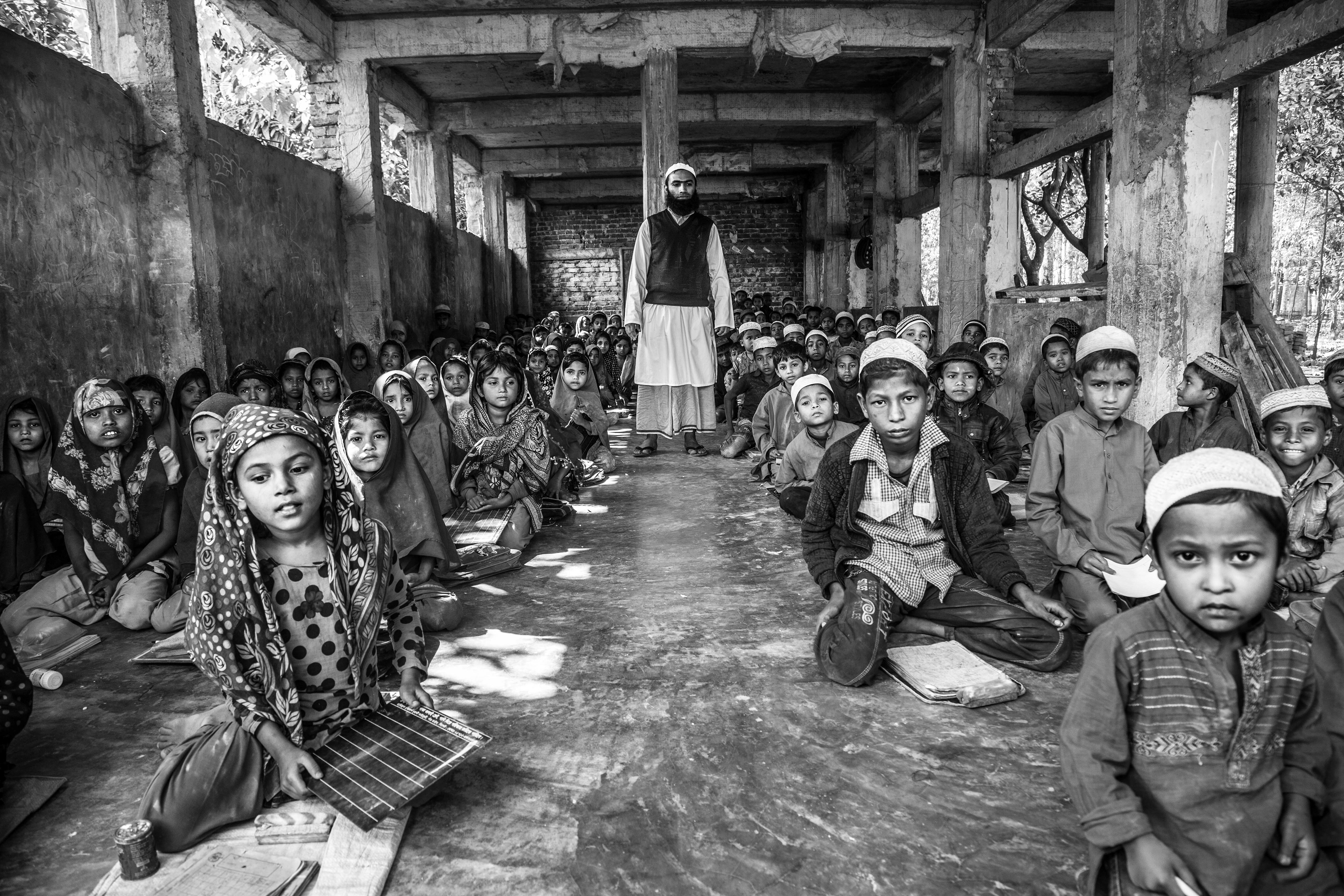
"All Ages Welcome." Shamlapur, Bangladesh. Jan 2016. A group of teachers runs a school here and they allow anyone who can afford the monthly payment of 100 taka (approx. $1 USD) to participate. Lessons include Bengali, English and Arabic languages, math, social sciences and religious studies. They take place six days per week in this unfinished and crumbling building.
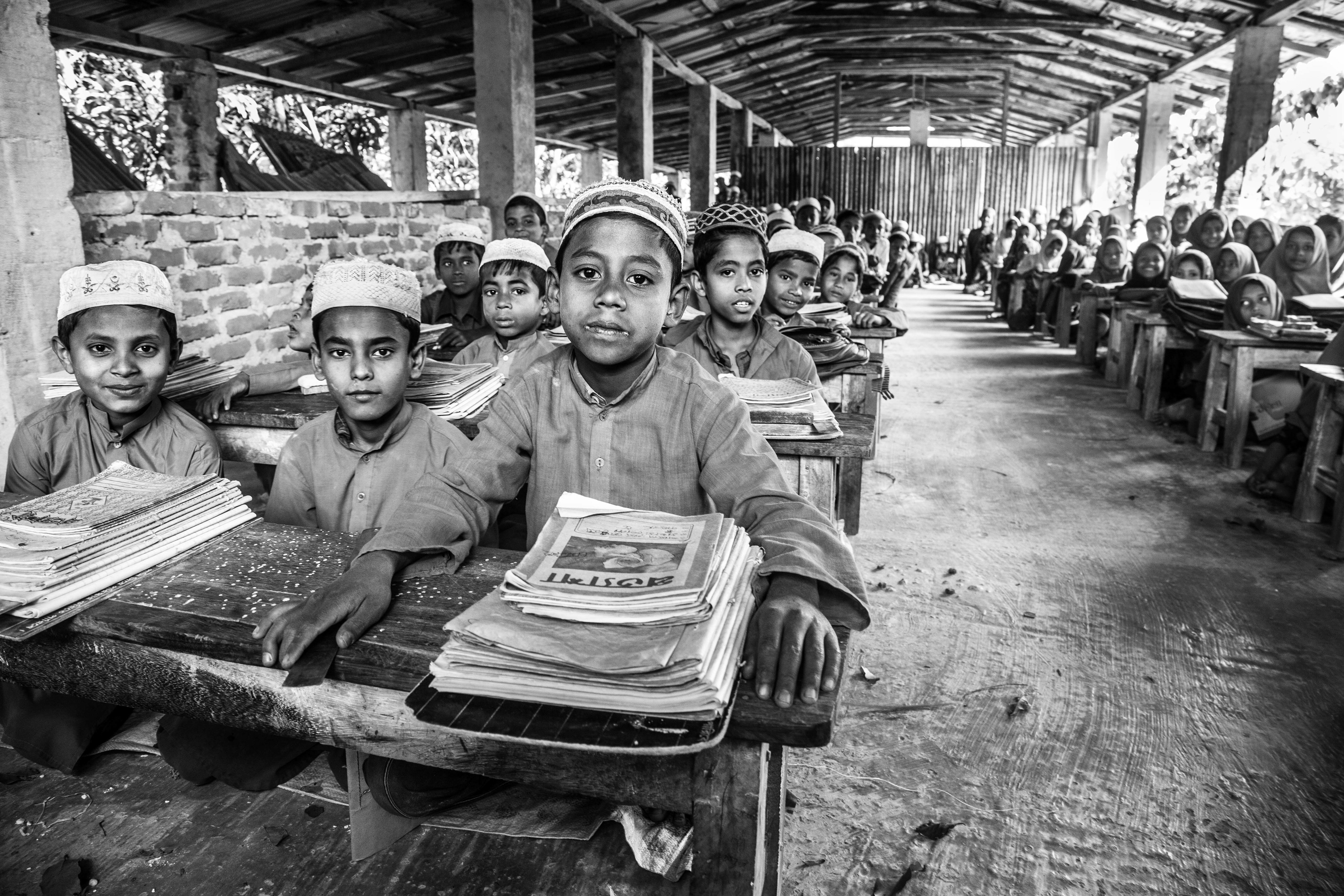
"Boys and Girls." Shamlapur, Bangladesh. Jan 2016. Boys and girls are split down the middle in this impromptu classroom, and receive more advanced lessons from those offered downstairs. In all, there are about 400-500 students here, a mix of Rohingya and Bengali.

"Vulnerable." Shaforidip, Bangladesh. Jan 2016. Shaforidip is a small port and fishing village at the end of the Teknaf peninsula. A few thousand Rohingya have ended up here, building and occupying homes vulnerable to the weather. Many men work at the docks, in construction, or on rickety fishing boats. Exploited because of their statelessness, the Rohingyas’ wages are about half of those that the Bengalis receive.
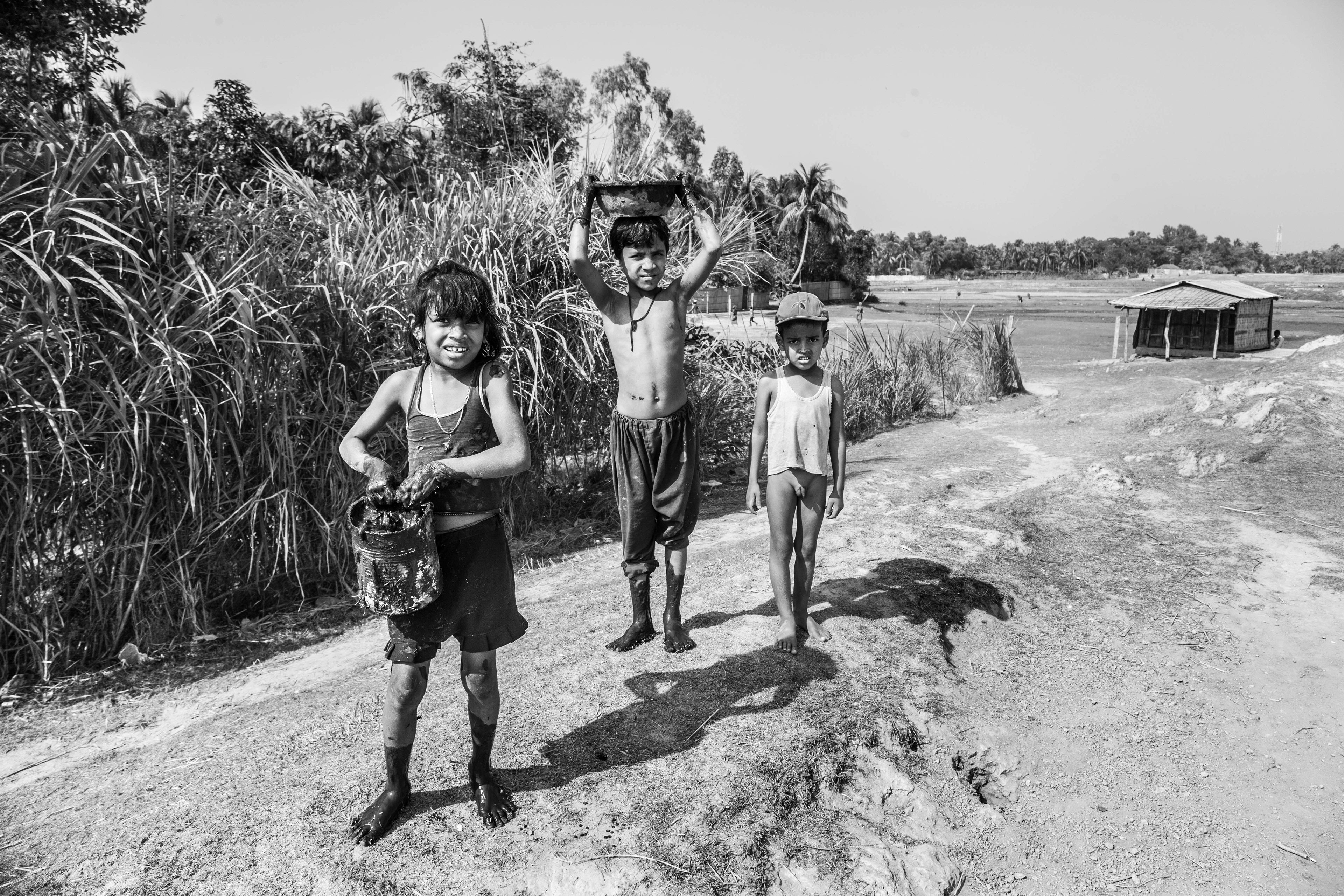
"To Make a Home." Shaforidip, Bangladesh. Jan 2016. At the southernmost tip of Bangladesh, Sharofidip is a shelter for many Rohingya fleeing the violence and persecution in Myanmar. These children are collecting thick mud to help build their family’s temporary home here.
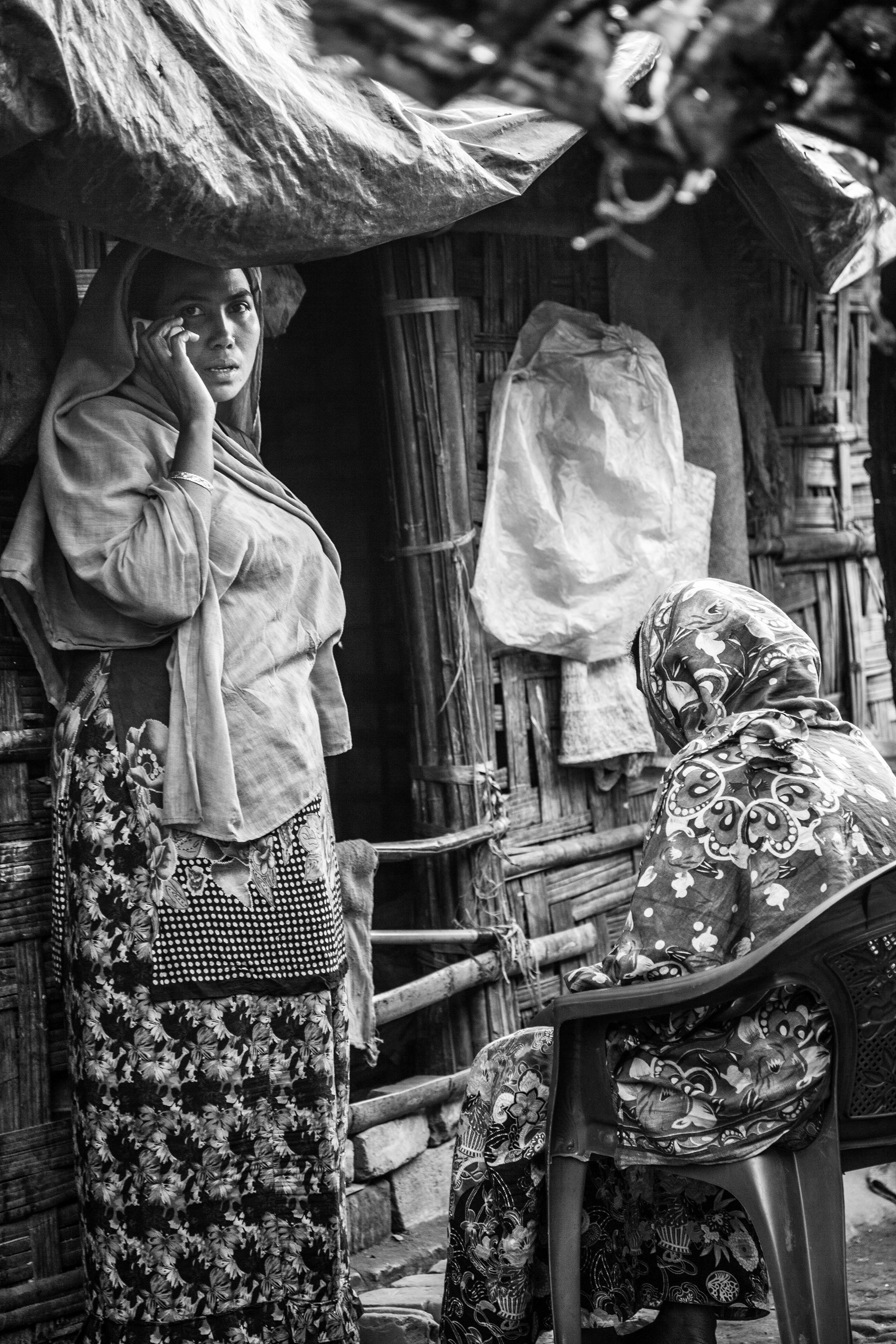
"In the Shadows." Leda Camp for Unregistered Refugees, Teknaf, Bangladesh. Jan 2016. Leda Camp is a makeshift refugee camp near Teknaf in the southern part of Cox’s Bazar District, originally established in 2001. Arbitrary arrest and violence towards the Rohingya is commonplace as they have no rights here in Bangladesh or back home in Myanmar. Many Rohingya, especially women, have been locked up or beaten simply for having a cell phone in their possession.
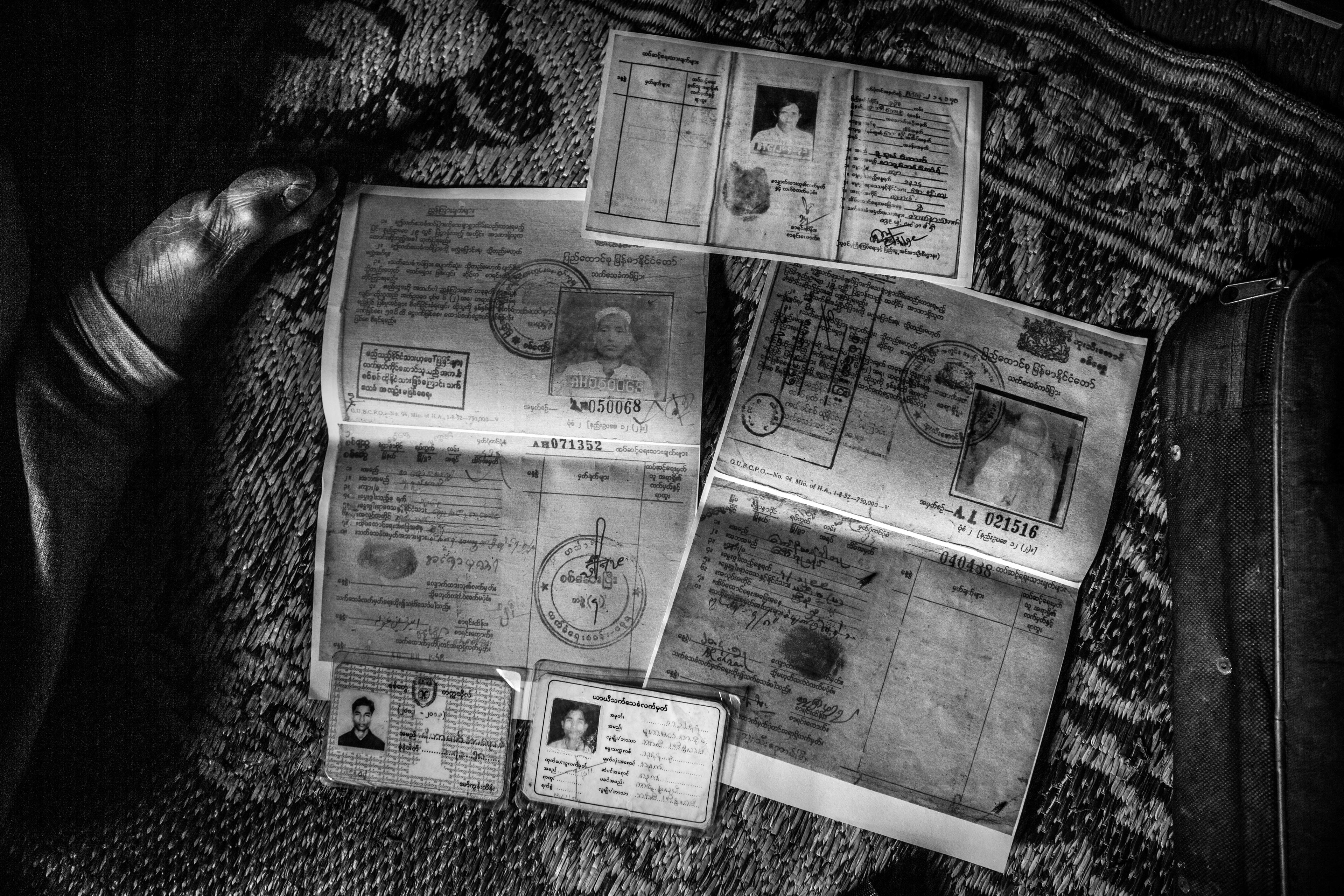
"Proof of Existence." Leda Camp, Teknaf, Bangladesh. Jan 2016. Many Rohingya who fled their homeland never had the time nor the capacity to bring anything with them except for their most important possessions. In the case of this man, those included his and his wife’s various identity cards and passports from Myanmar. Unfortunately, they are no longer valid or respected by any government.
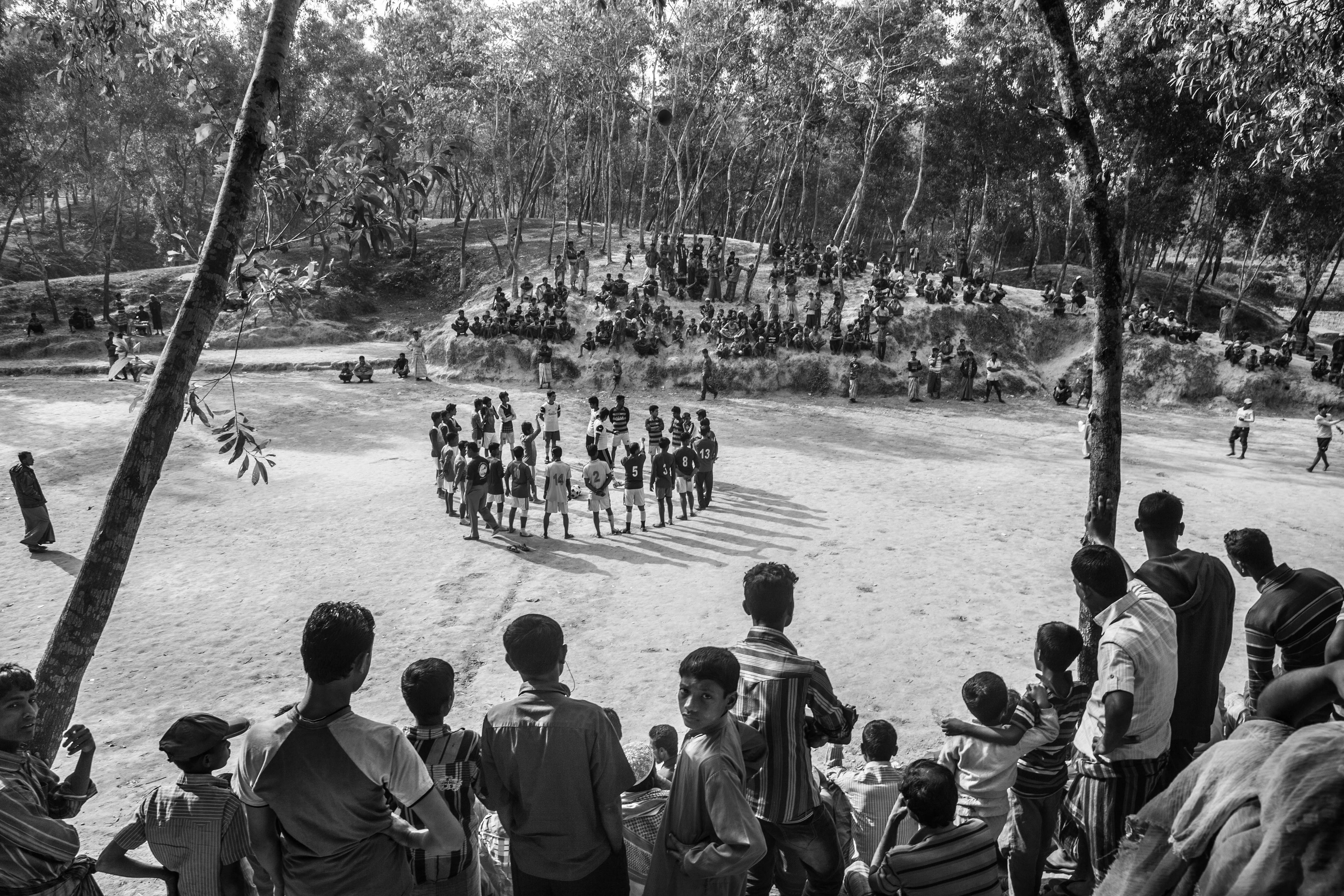
"Football Tourney." Leda Camp, Teknaf, Bangladesh. Jan 2016. In order to maintain some idea of home and community, the various blocks in this refugee camp have organized teams to participate in a football tournament. It’s a brief respite from the daily troubles they encounter and an exercise in their solidarity.
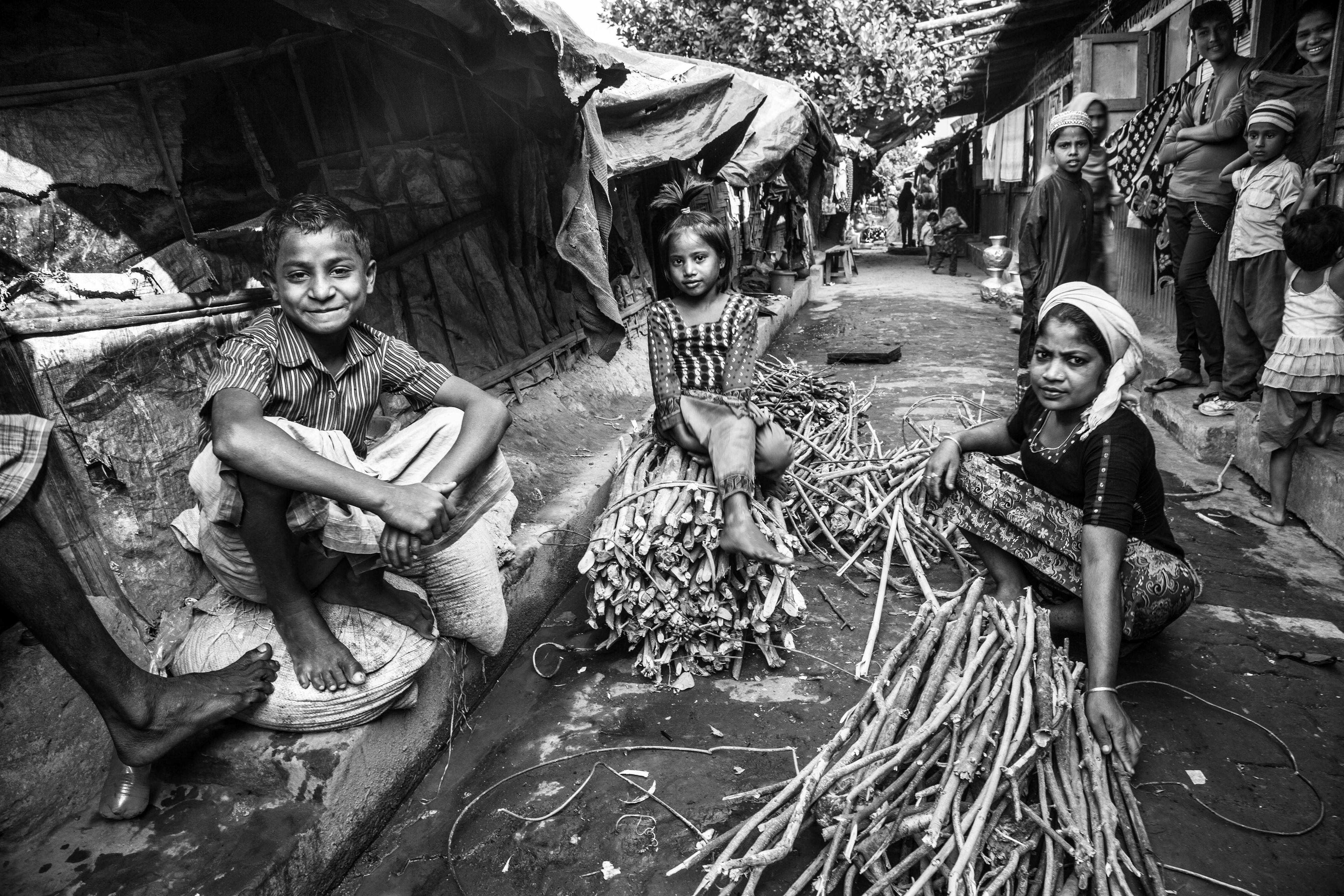
"Bundling Firewood." Leda Camp, Teknaf, Bangladesh. Jan 2016. To support their families, many Rohingya rely on collecting and selling firewood. In the forests and on the roads outside of the camp, they are more exposed and are often victims of violent crimes by locals and police, especially the women.
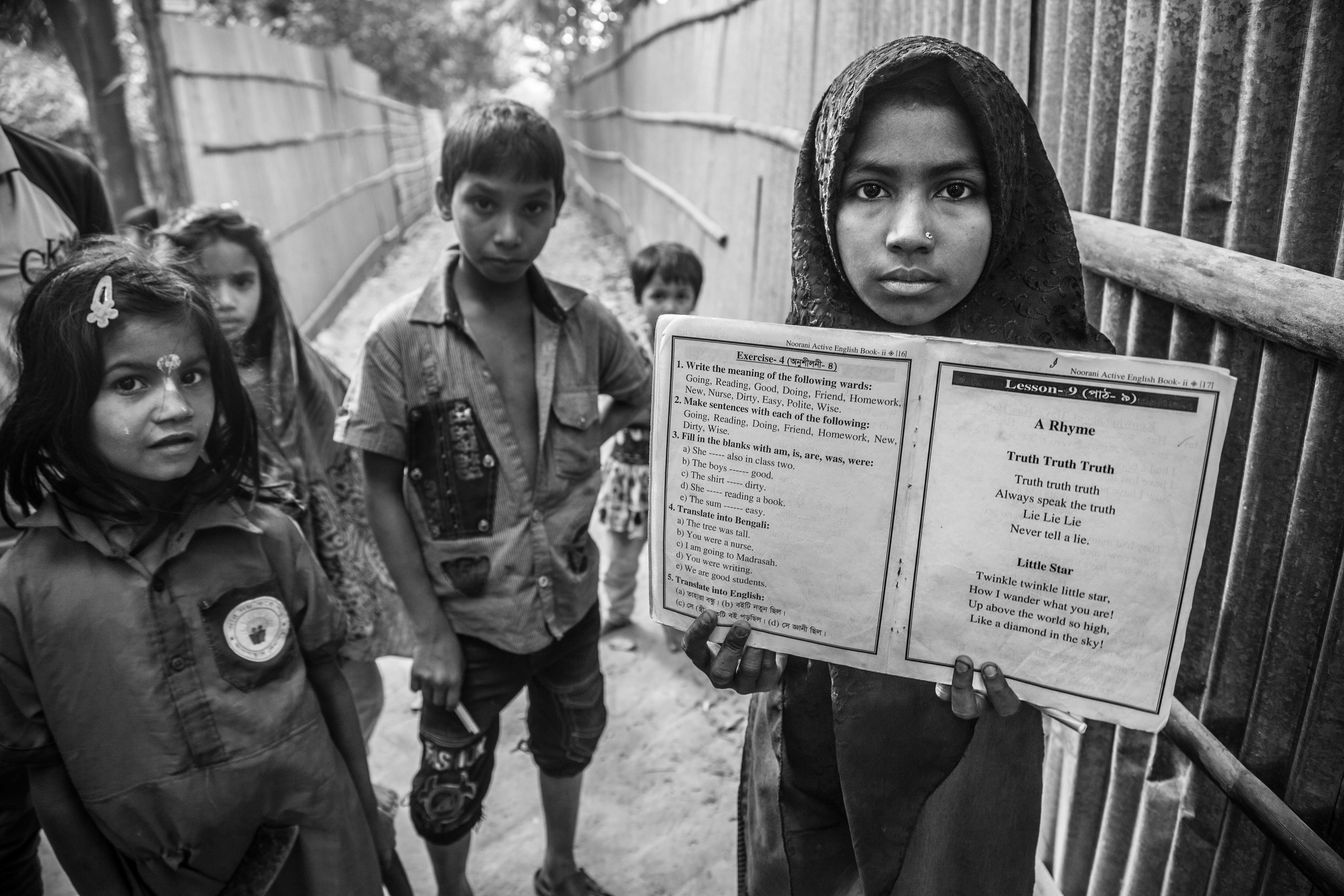
"Lie, Lie, Lie." Leda Camp, Teknaf, Bangladesh. Jan 2016. In camps for unregistered refugees, there is no formal education offered. So, families that can afford it, purchase forged Bangladeshi documents for their children in order for them to participate in public primary and high schools. Others receive lessons under the Noorani curriculum, which combines religious and secular studies. Of the 8,000 children that reside in Leda Camp, only about 1,500 attend some kind of school.
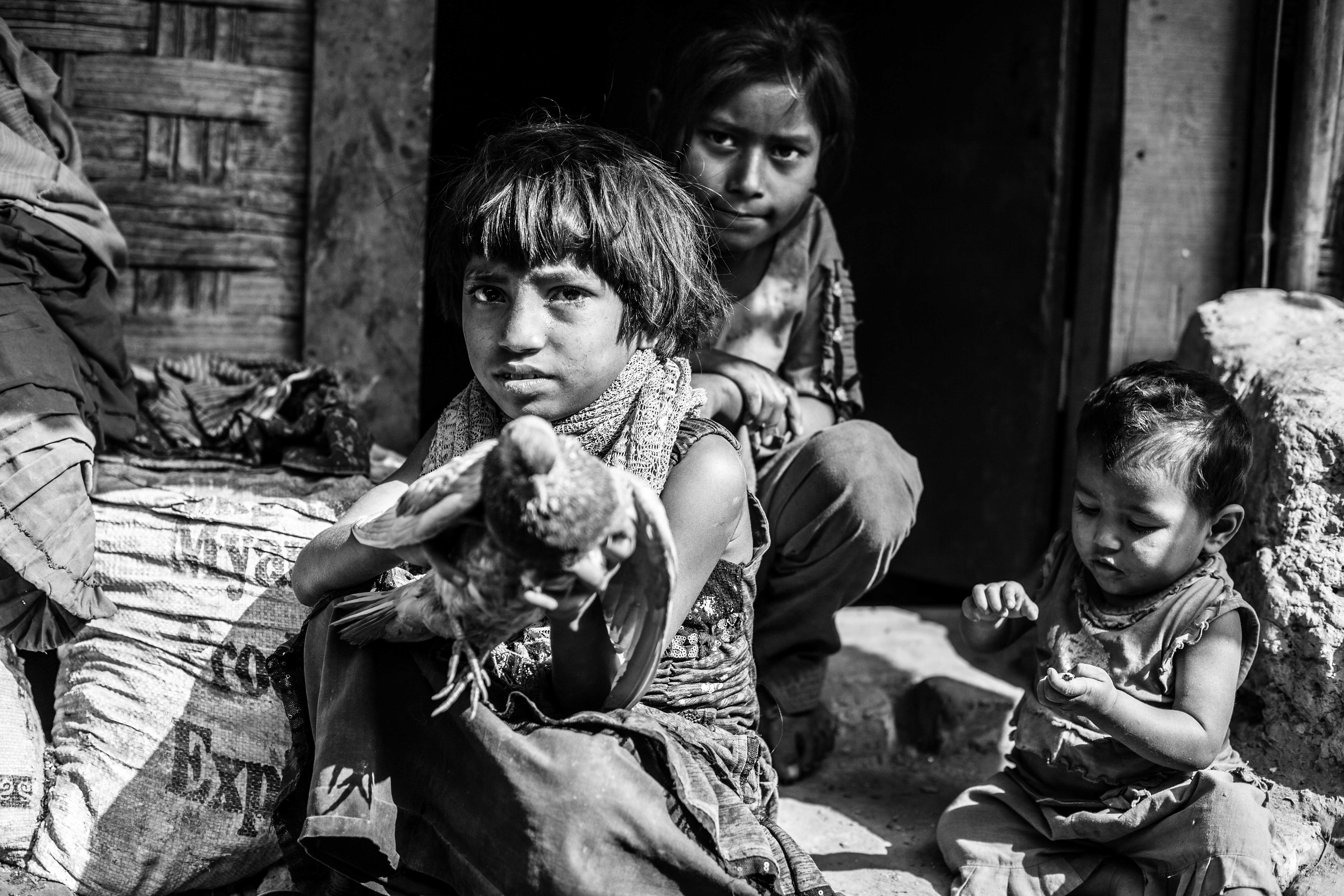
"Clipped Wings." Leda Camp, Teknaf, Bangladesh. Jan 2016. Young children play with a flightless bird, to be used for a meal, outside of their family’s home. The vast majority of the huts in this refugee camp have less than 20 square meters and typically house 6-8 people. There are roughly 2,100 families that live in Leda Camp, making up a total population of approximately 17,000.

"No Place To Be." Leda Camp, Teknaf, Bangladesh. Jan 2016. A grandfather and his grandson catch some sun in an empty alley while the rest of the family is out. Work is increasingly difficult to find, so most of the day, Rohingyas are out collecting firewood or begging in the neighboring towns.
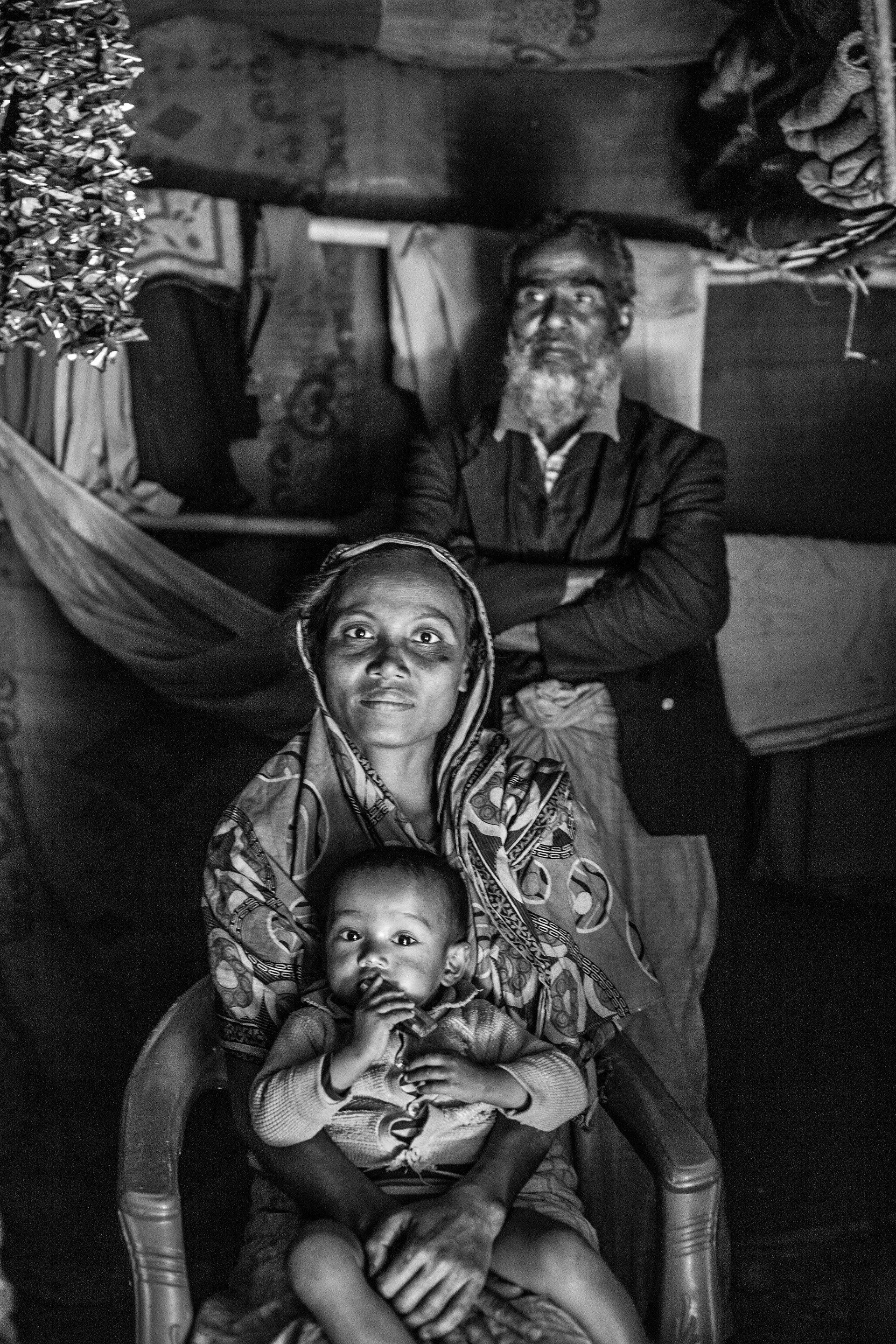
"A Family History." Leda Camp, Teknaf, Bangladesh. Jan 2016. A portrait of Kasim and his wife and daughter. Kasim suffers from memory loss and twitches after his imprisonment where he was tortured by electrocution for allegedly taking part in the Rohingya Solidarity Organization, a militant group that rose up against the Myanmar Armed Forces in the 1990s.
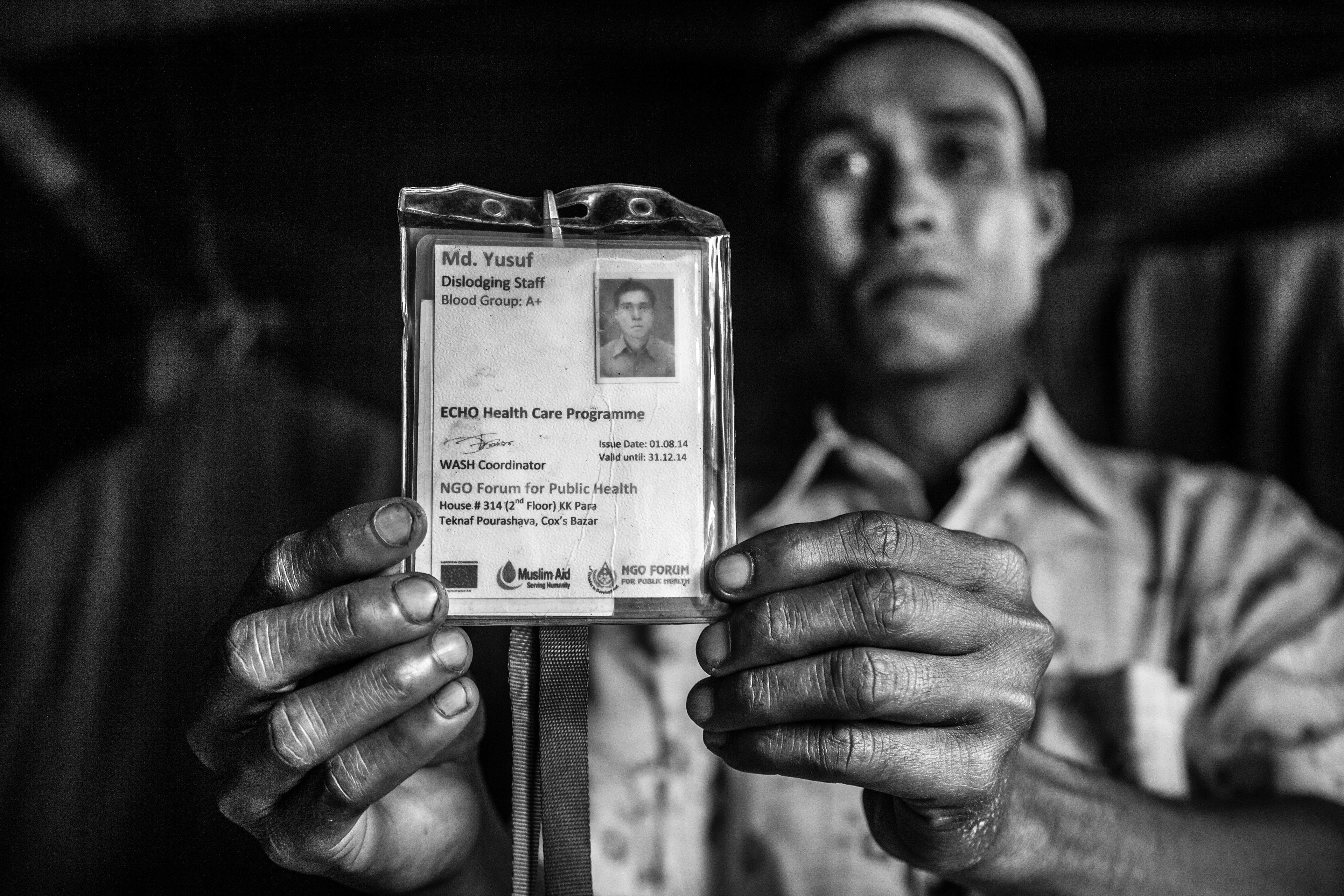
"Expired." Leda Camp, Teknaf, Bangladesh. Jan 2016. NGOs such as Muslim Aid, NGO Forum and Islamic Relief ended their humanitarian efforts within Leda Camp because the Bangladeshi government consistently refused to approve of their programs and projects that benefited the Rohingya. Qualified men like Mohammed Yusuf can no longer support their community without the necessary resources that were once provided. Hundreds of Rohingyas are suffering or dying from curable diseases in these kinds of camps.
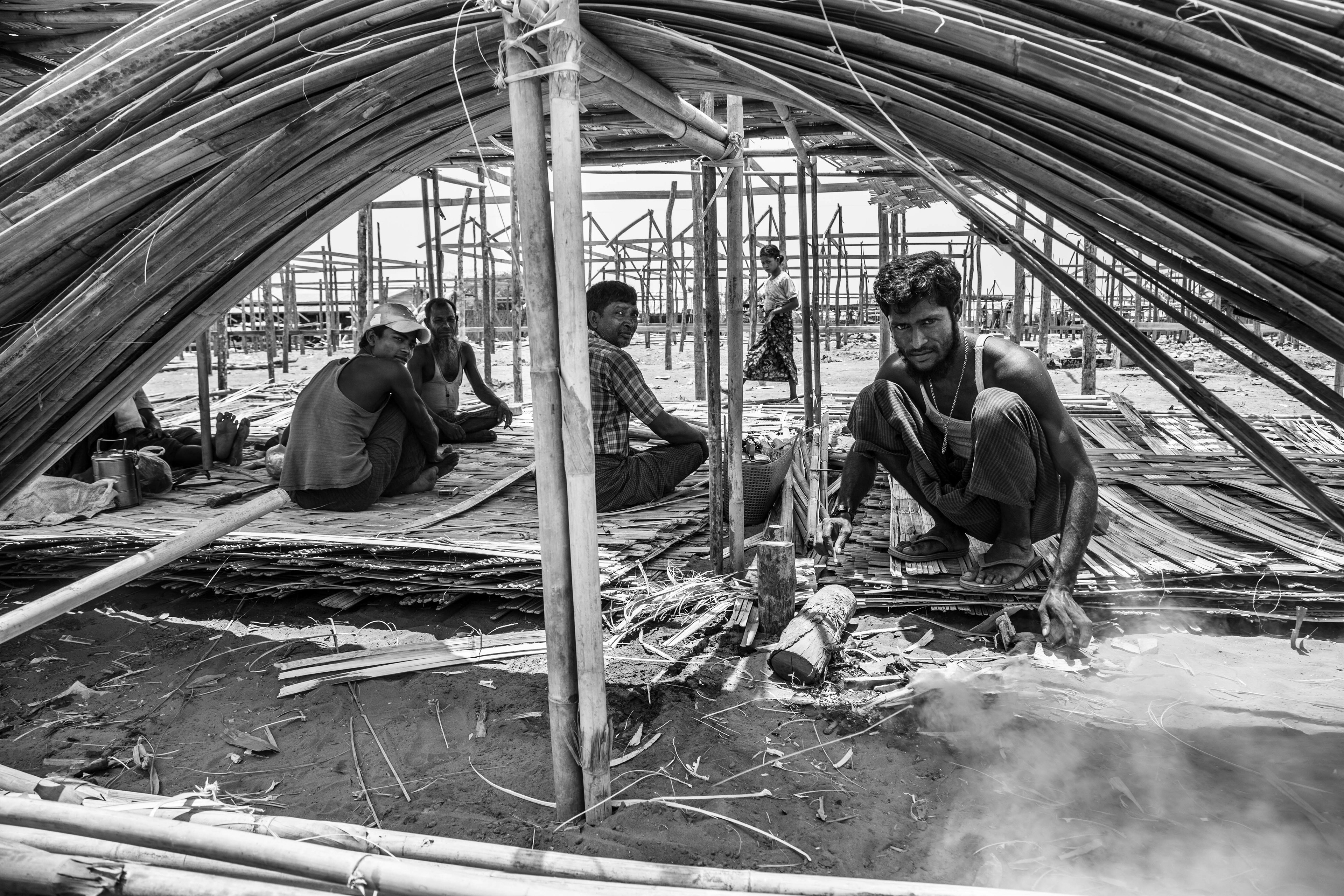
"To Rebuild a Home." Baw Du Ba IDP Camp, Sittwe, Myanmar. May 2016. Following the 2012 violence in downtown Sittwe, thousands of Rohingya were forced out of the city and into isolated IDP (Internally Displaced Persons) camps where they are treated like prisoners. A week before this photo was taken, a devastating fire ripped through the camp, affecting over 400 families. Here, men try to rebuild the longhouses with the little resources that the government has granted them.
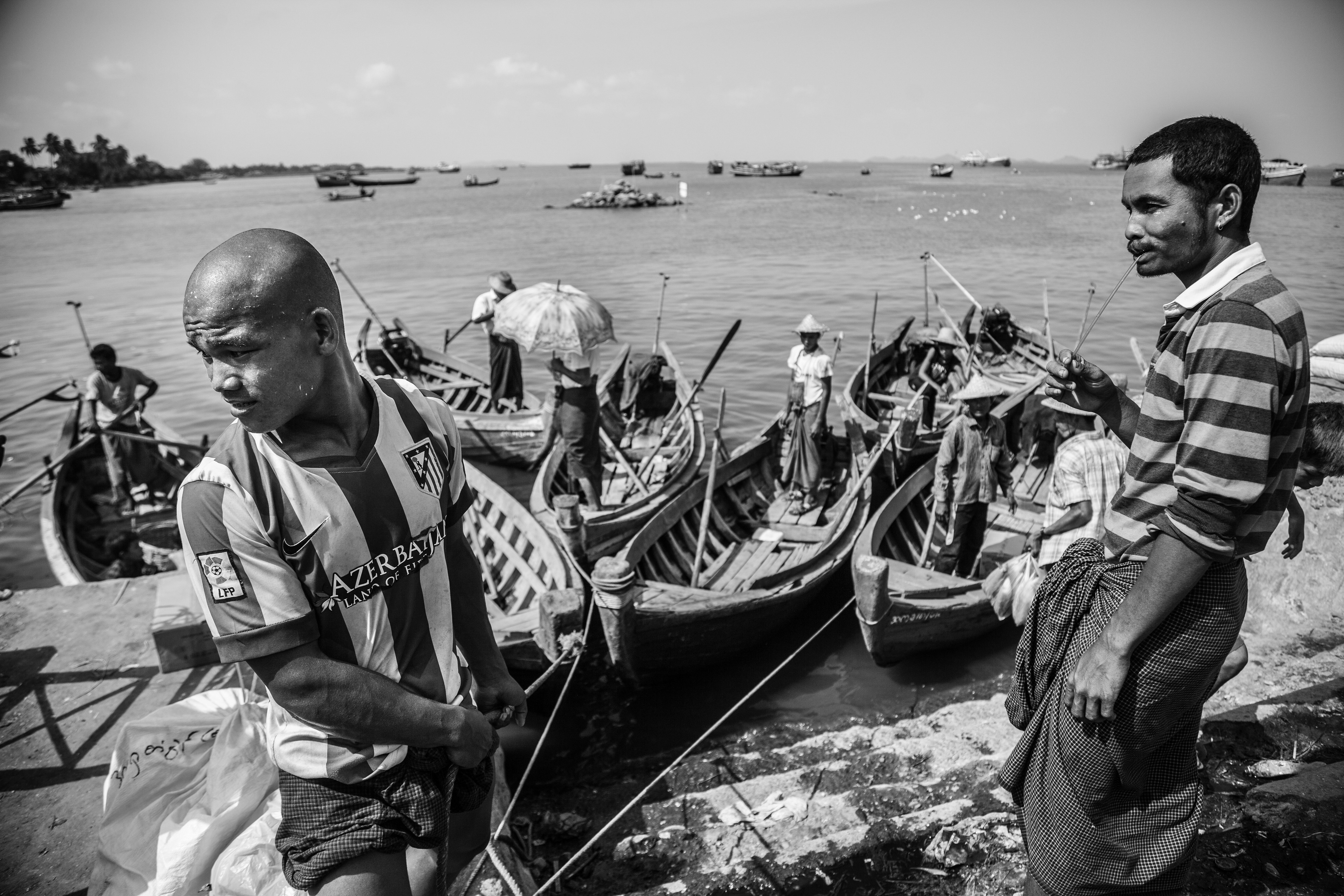
"Pier at Sittwe Market." Sittwe, Myanmar. May 2016. Rohingya and Rakhine Buddhists once traded freely in this large market, but after waves of violence in 2012, there are no longer Rohingya-owned stalls or boats that operate here. In fact, the only Rohingyas that remain in downtown Sittwe are cordoned off by armed police checkpoints and barbed wire in a quarter called Aung Mingalar.

"Inside Sittwe Market." Sittwe, Myanmar. May 2016. Rohingya and Rakhine Buddhists once traded freely in this large market, but after waves of violence in 2012, there are no longer Rohingya-owned stalls or boats that operate here. All but 4,000 or so Rohingya remain in Aung Mingalar, which had a population of more than 15,000 before 2012.

"Cattle Market." Thakkay Pyin, Myanmar. May 2016. Most of the land once owned by Rohingya was forcibly seized by the Myanmar government and turned over to Rakhine or Bengali Buddhists or used for military training grounds north of Sittwe. Some Rohingya still work these farmlands, but they receive very low wages from the new land-owners and have a hard time affording the necessary livestock. Here, Rohingya men observe the scene at this cattle market outside of the IDP camps near Thakkay Pyin.
